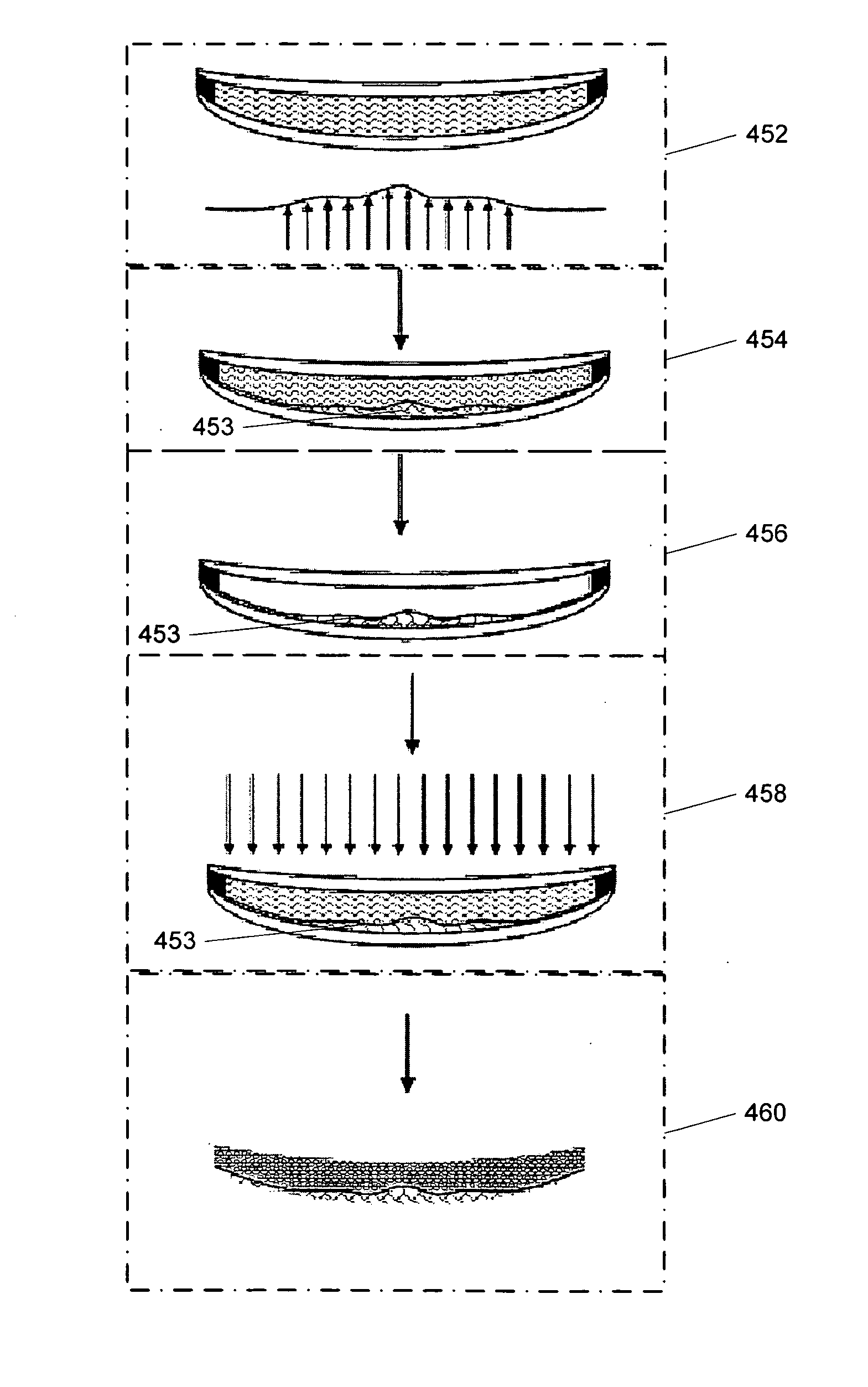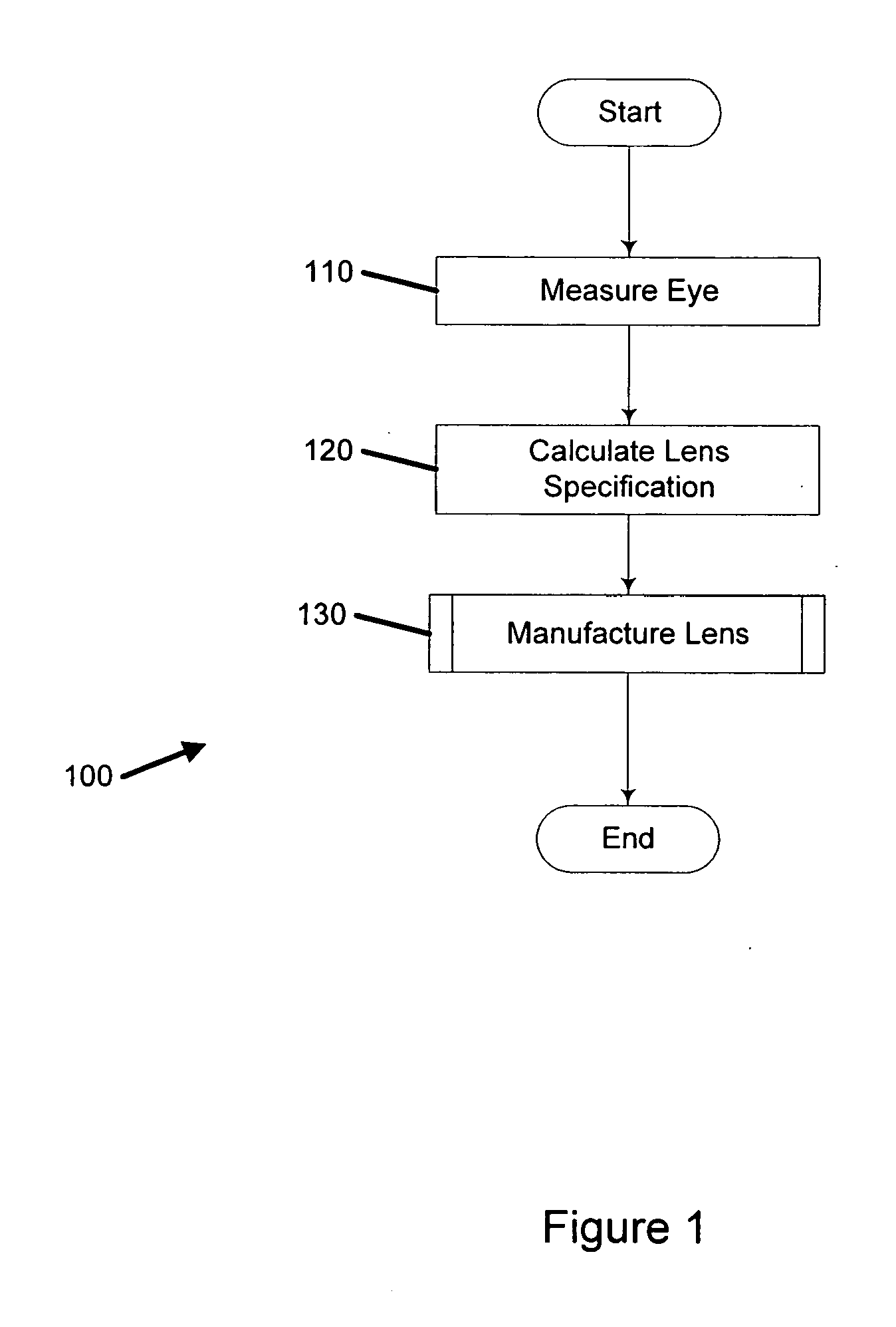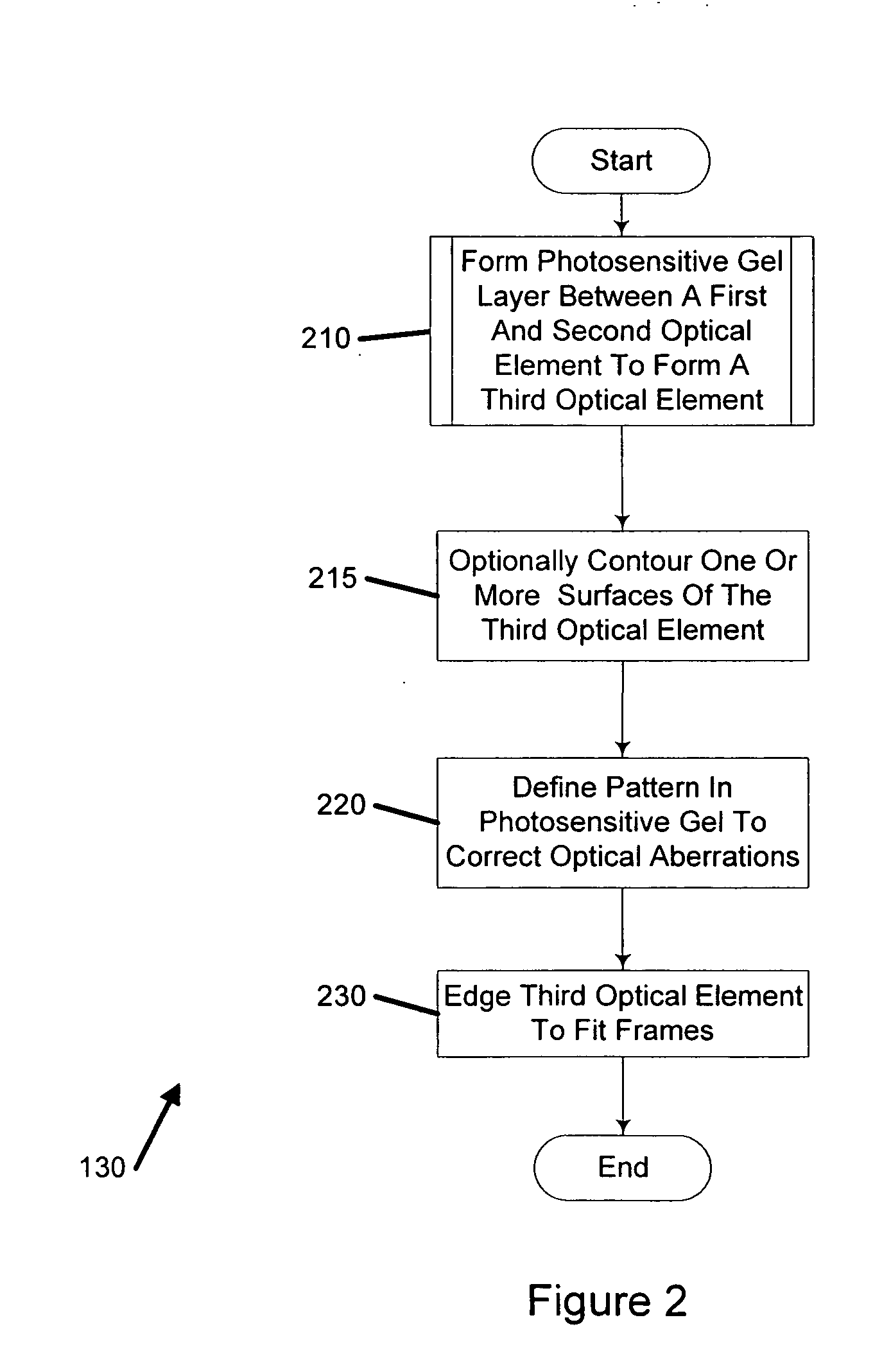Eyeglass dispensing method
a technology of eyeglasses and lenses, applied in the field of manufacturing optical lenses, can solve the problems of limited correction of blurred vision, affecting reducing the optical performance of the eye,
- Summary
- Abstract
- Description
- Claims
- Application Information
AI Technical Summary
Benefits of technology
Problems solved by technology
Method used
Image
Examples
Embodiment Construction
” one will understand how the features of this invention provide advantages that include convenient and economical methods of manufacturing customized multi-layer lenses.
[0007] One embodiment is a method of making corrective eyeglasses. The method includes obtaining vision parameters of a patient's eyes, obtaining an eyeglass frame comprising at least one mounted optical element, and programming the optical element to define a pattern of refraction that is associated with the vision parameters.
[0008] Another embodiment is a method of manufacturing customized lenses. The method includes obtaining a lens definition comprising vision parameters of a patient's eyes and a correction for least one optical aberration in the patient's eye. The method further comprises obtaining a frame comprising at least one optical element. The at least one optical element includes a layer of curable material. The method further includes curing the curable material to define a pattern of refraction. The ...
PUM
 Login to View More
Login to View More Abstract
Description
Claims
Application Information
 Login to View More
Login to View More - R&D
- Intellectual Property
- Life Sciences
- Materials
- Tech Scout
- Unparalleled Data Quality
- Higher Quality Content
- 60% Fewer Hallucinations
Browse by: Latest US Patents, China's latest patents, Technical Efficacy Thesaurus, Application Domain, Technology Topic, Popular Technical Reports.
© 2025 PatSnap. All rights reserved.Legal|Privacy policy|Modern Slavery Act Transparency Statement|Sitemap|About US| Contact US: help@patsnap.com



